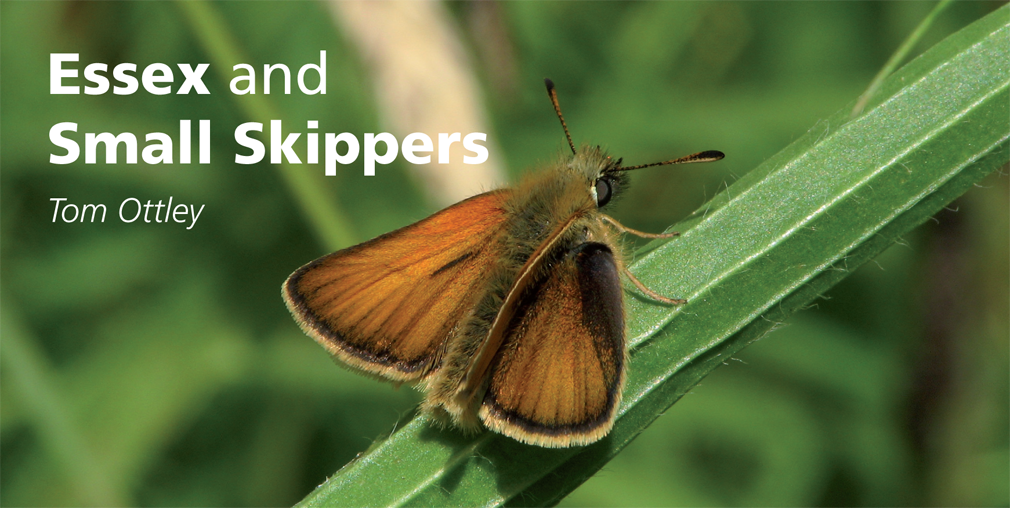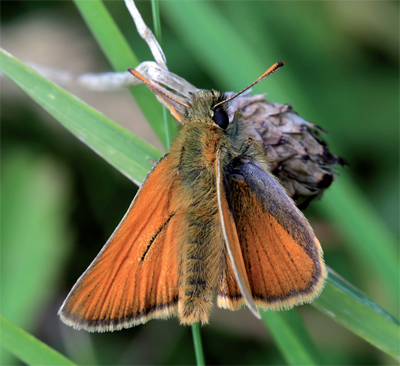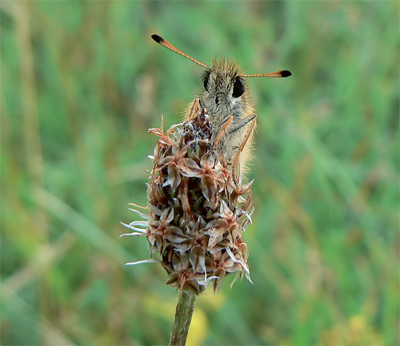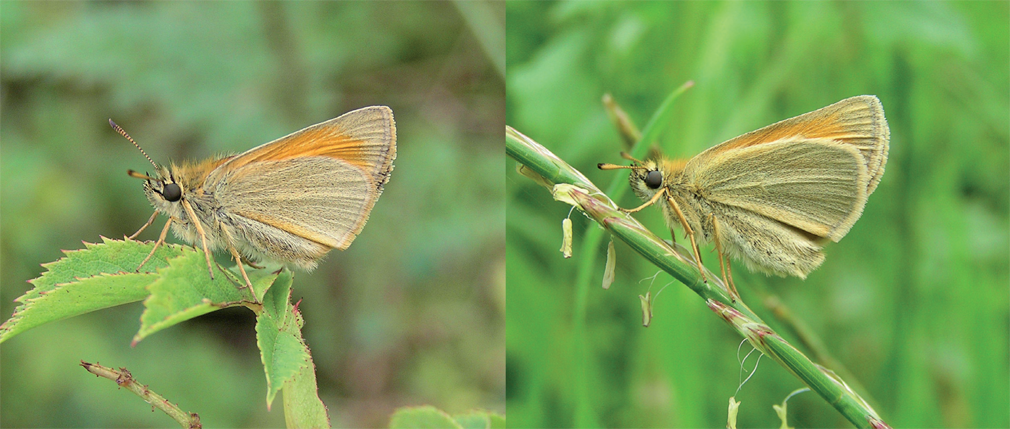Essex and Small Skippers
Originally published in the Spring 2010 Sussex Butterfly Report
 Essex Skipper, male, near Birling Gap
Essex Skipper, male, near Birling Gap
 Small Skipper, male Photo: Neil Hulme
Small Skipper, male Photo: Neil Hulme
 Small Skipper, male, Malling Down
Small Skipper, male, Malling Down
 Essex Skipper Photo: Neil Hulme
Essex Skipper Photo: Neil Hulme
The first task is to try and get a good view. Like many butterflies, you’ll need a bit of patience to get close and this is when a pair of close-focussing binoculars can make a big difference. Binoculars designed for watching birds are often less suitable because they don’t allow you to get close enough. Once you have a good view there are several key points to look for.
The males are the easiest to separate. If you can see the scent mark on the forewing, as in the picture above, it is short and straight in the Essex Skipper – indeed the scientific name, lineola means ‘a small line’. Also notice the shape of the antennae – they are clearly rounded at the tips. In a top view like this these are the best features to focus on. Don’t try to assess the colour of the antennae from the top; it is only the undersides that differ reliably.
With a male Small Skipper the scent mark often shows an obvious kink and this can be quite prominent. Also, notice that it crosses at least one of the veins and is no longer purely parallel to them.
The tips of the antennae on the Small Skipper are pointed, almost the beginning of a hook. And the colour of that tip is orange as are the undersides. If you can get to the front of the insect you should be able to get a clear view.
If you can get a view of an Essex Skipper like the one opposite and below then identification is easy. The undersides are very clearly jet black and this is a definitive field mark. However it’s often quite difficult to get this view in which case there is another method which works well. The undersides of the forewings are basically orange with grey tips and that is true for both species. However in the Small Skipper the grey tips are clear and welldefined whereas in the Essex they tend to merge together and the contrast is much less as the pictures at the bottom of the page clearly show.
Although there will always be a few individuals where it is hard to decide, it is usually possible to make an informed judgement based on glimpses of one or more of the identifying features described above.
 Small Skipper, female (left) & Essex Skipper, female Both Photos: Vince Massimo
Small Skipper, female (left) & Essex Skipper, female Both Photos: Vince Massimo


